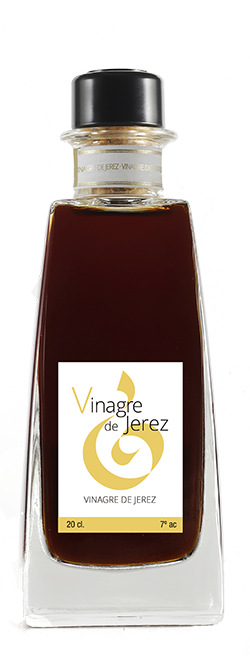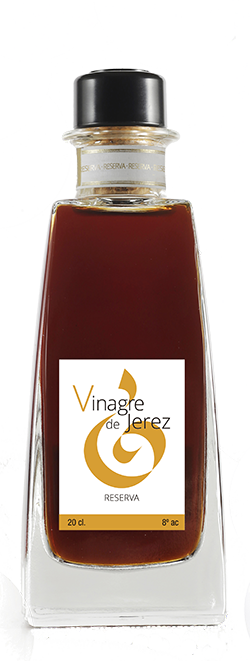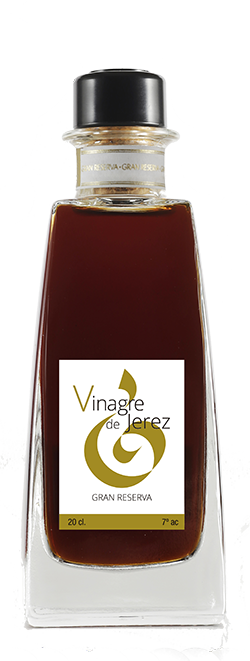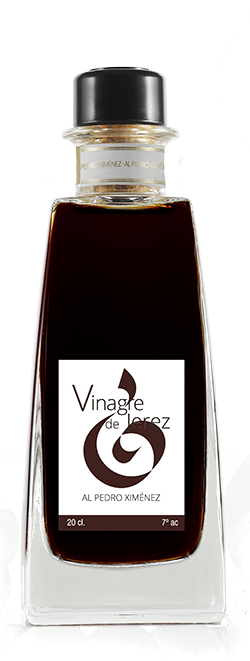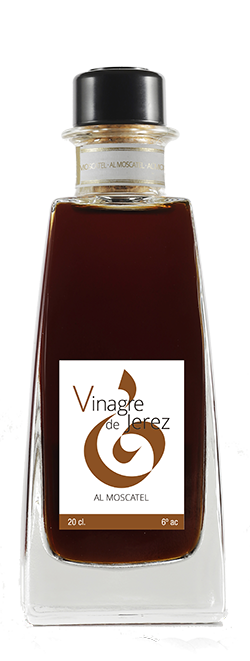| Ageing takes place in wooden casks and can range from six months to two years. | |
| It has an intense amber colour with touches of mahogany. | |
| Its acetic aroma contains hints of nuts and wood, from have been aged in wooden barrels. | |
| Ideal for dressing all kinds of dishes, for pickling or for preparing sauces and reductions. |
WHAT IS SHERRY VINEGAR?
Vinegar, from the French “vin aigre” (bitter wine), is produced by acetic bacteria interacting with a water and alcohol-based solution. Actually, vinegar can be made from any food that ferments alcohol (apples, beets, rice and, naturally, wine). Sherry Vinegar is made exclusively from Sherry Wines.
ITS ORIGIN
The secret behind Sherry Vinegar’s unique and extraordinary quality is, without a doubt, its origin. Sherry Vinegar comes from Sherry Wines, noble wines par excellence, and which lend it a wealth of nuances and outstanding features. Hence, Sherry Vinegar can only be made in one place: the Jerez Region in southern Spain, where these singular wines are produced.

PRODUCT OF A UNIQUE
LANDSCAPE
The Jerez countryside is one of softly rolling hills whose white albariza soil receives over 300 days of sunshine a year, creating a microclimate with humidity brought in by the easterly winds from the Atlantic Ocean.
HOW IS SHERRY VINEGAR MADE?
Sherry Vinegar is aged in the same way that Sherry Wines are, according to a process known as the criaderas y solera system. This genuine and prolonged ageing, which can last up to 10-20 years, is what gives Sherry Vinegar its rich complexity and extraordinary concentration.
THE CRIADERAS Y SOLERA AGEING SYSTEM
Step 1 Step 2 Step 3
The oldest vinegars ready for bottling are drawn only from the casks on the lowest row, called the solera (from the Spanish, suelo, meaning floor).

The amount extracted from the solera, always kept to a minimum, is replaced by younger vinegar from the row just above the solera; namely, the first criadera.

Rows, younger vinegar, solera, 1st criadera, 2nd criadera, extraction, topping up… This same operation is repeated with the vinegar in the row immediately above it, the 2nd criadera and so on…


